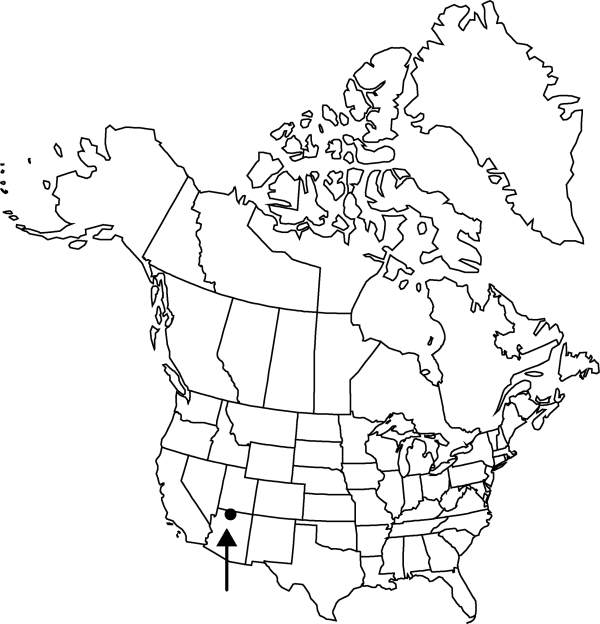Difference between revisions of "Pediocactus paradinei"
Cact. Succ. J. (Los Angeles) 29: 136, figs 83, 84. 1957.
FNA>Volume Importer |
imported>Volume Importer |
||
| (7 intermediate revisions by 2 users not shown) | |||
| Line 8: | Line 8: | ||
}} | }} | ||
|common_names=Houserock cactus;park hedgehog cactus | |common_names=Houserock cactus;park hedgehog cactus | ||
| + | |special_status={{Treatment/ID/Special_status | ||
| + | |code=E | ||
| + | |label=Endemic | ||
| + | }}{{Treatment/ID/Special_status | ||
| + | |code=C | ||
| + | |label=Conservation concern | ||
| + | }} | ||
|basionyms= | |basionyms= | ||
|synonyms={{Treatment/ID/Synonym | |synonyms={{Treatment/ID/Synonym | ||
|name=Pediocactus simpsonii var. paradinei | |name=Pediocactus simpsonii var. paradinei | ||
|authority=(B. W. Benson) Halda | |authority=(B. W. Benson) Halda | ||
| − | }}{{Treatment/ID/Synonym | + | |rank=variety |
| + | }} {{Treatment/ID/Synonym | ||
|name=Pilocanthus paradinei | |name=Pilocanthus paradinei | ||
|authority=(B. W. Benson) B. W. Benson & Backeberg | |authority=(B. W. Benson) B. W. Benson & Backeberg | ||
| + | |rank=species | ||
}} | }} | ||
|hierarchy=Cactaceae;Cactaceae subfam. Cactoideae;Pediocactus;Pediocactus paradinei | |hierarchy=Cactaceae;Cactaceae subfam. Cactoideae;Pediocactus;Pediocactus paradinei | ||
| Line 23: | Line 32: | ||
}}<!-- | }}<!-- | ||
| − | --><span class="statement" id="st- | + | --><span class="statement" id="st-undefined" data-properties=""><b>Plants </b>unbranched. <b>Stems</b> subglobose to globose, 3–7.5 × 2.5–5.5(–8) cm; areoles circular to oval, villous. <b>Spines</b> smooth, thin and flexible, sometimes distinguishable as radial and central; radial spines 13–22 per areole, straight or curving irregularly, white, 20–25 × 0.2–0.3 mm; central spines 3–6 per areole, dense in mature plants, white to pale gray, straight, flexible, hairlike, 8–35 × 0.3 mm. <b>Flowers</b> 1.5–2.2 × 1.9–2.5 cm; scales and outer tepals minutely toothed or denticulate or entire and undulate; outer tepals brown midstripes with pale or white margins, oblanceolate, 8–20 × 3–6 mm; inner tepals light yellow to pink, oblanceolate, 15–20 × 4–6 mm. <b>Fruits</b> greenish yellow maturing to reddish brown, cylindric, 7–10 × 5–8 mm. <b>Seeds</b> black, 2.5 × 2 mm, papillate but not rugose.</span><!-- |
-->{{Treatment/Body | -->{{Treatment/Body | ||
| + | |phenology=Flowering spring. | ||
|habitat=Gravelly limestone soils of pinyon-juniper, ponderosa pine, and grama grass communities | |habitat=Gravelly limestone soils of pinyon-juniper, ponderosa pine, and grama grass communities | ||
|elevation=1500-2100 m | |elevation=1500-2100 m | ||
|distribution=Ariz. | |distribution=Ariz. | ||
|discussion=<p>Of conservation concern.</p><!-- | |discussion=<p>Of conservation concern.</p><!-- | ||
| − | --><p>Pediocactus paradinei is endemic to the Kaibab Plateau region of northern Arizona.</p> | + | --><p><i>Pediocactus paradinei</i> is endemic to the Kaibab Plateau region of northern Arizona.</p> |
|tables= | |tables= | ||
|references= | |references= | ||
| Line 39: | Line 49: | ||
-->{{#Taxon: | -->{{#Taxon: | ||
name=Pediocactus paradinei | name=Pediocactus paradinei | ||
| − | |||
|authority=B. W. Benson | |authority=B. W. Benson | ||
|rank=species | |rank=species | ||
| Line 46: | Line 55: | ||
|basionyms= | |basionyms= | ||
|family=Cactaceae | |family=Cactaceae | ||
| + | |phenology=Flowering spring. | ||
|habitat=Gravelly limestone soils of pinyon-juniper, ponderosa pine, and grama grass communities | |habitat=Gravelly limestone soils of pinyon-juniper, ponderosa pine, and grama grass communities | ||
|elevation=1500-2100 m | |elevation=1500-2100 m | ||
| Line 52: | Line 62: | ||
|publication title=Cact. Succ. J. (Los Angeles) | |publication title=Cact. Succ. J. (Los Angeles) | ||
|publication year=1957 | |publication year=1957 | ||
| − | |special status= | + | |special status=Endemic;Conservation concern |
| − | |source xml=https:// | + | |source xml=https://bitbucket.org/aafc-mbb/fna-data-curation/src/2e0870ddd59836b60bcf96646a41e87ea5a5943a/coarse_grained_fna_xml/V4/V4_399.xml |
|subfamily=Cactaceae subfam. Cactoideae | |subfamily=Cactaceae subfam. Cactoideae | ||
|genus=Pediocactus | |genus=Pediocactus | ||
|species=Pediocactus paradinei | |species=Pediocactus paradinei | ||
| − | |||
| − | |||
| − | |||
| − | |||
| − | |||
| − | |||
| − | |||
| − | |||
| − | |||
| − | |||
| − | |||
| − | |||
| − | |||
| − | |||
| − | |||
| − | |||
| − | |||
| − | |||
| − | |||
| − | |||
| − | |||
| − | |||
| − | |||
| − | |||
| − | |||
| − | |||
| − | |||
| − | |||
| − | |||
| − | |||
| − | |||
| − | |||
| − | |||
| − | |||
| − | |||
| − | |||
| − | |||
| − | |||
| − | |||
| − | |||
| − | |||
| − | |||
| − | |||
| − | |||
| − | |||
| − | |||
| − | |||
| − | |||
}}<!-- | }}<!-- | ||
-->[[Category:Treatment]][[Category:Pediocactus]] | -->[[Category:Treatment]][[Category:Pediocactus]] | ||
Latest revision as of 21:58, 5 November 2020
Plants unbranched. Stems subglobose to globose, 3–7.5 × 2.5–5.5(–8) cm; areoles circular to oval, villous. Spines smooth, thin and flexible, sometimes distinguishable as radial and central; radial spines 13–22 per areole, straight or curving irregularly, white, 20–25 × 0.2–0.3 mm; central spines 3–6 per areole, dense in mature plants, white to pale gray, straight, flexible, hairlike, 8–35 × 0.3 mm. Flowers 1.5–2.2 × 1.9–2.5 cm; scales and outer tepals minutely toothed or denticulate or entire and undulate; outer tepals brown midstripes with pale or white margins, oblanceolate, 8–20 × 3–6 mm; inner tepals light yellow to pink, oblanceolate, 15–20 × 4–6 mm. Fruits greenish yellow maturing to reddish brown, cylindric, 7–10 × 5–8 mm. Seeds black, 2.5 × 2 mm, papillate but not rugose.
Phenology: Flowering spring.
Habitat: Gravelly limestone soils of pinyon-juniper, ponderosa pine, and grama grass communities
Elevation: 1500-2100 m
Discussion
Of conservation concern.
Pediocactus paradinei is endemic to the Kaibab Plateau region of northern Arizona.
Selected References
None.
